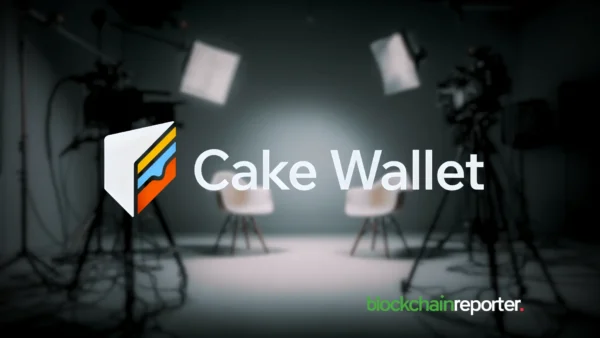
- 0.2. Q1. You’ve led marketing and communications at global brands like Shopify, eBay, Mobike, then steered strategy at Binance and BNB Chain—what thread has tied your career across these diverse roles?
- 0.4. Q2. What was the “aha” moment that convinced you to leave Binance and co‑found Fintopio to tackle wallet usability head‑on?
- 0.6. Q3. You’ve said wallet UX must be built for humans, not developers. In practical terms, what does “human‑first” design look like in a crypto wallet?
- 0.8. Q4. Long hexadecimal addresses remain standard—why are they a UX mistake, and how urgently must the industry move to human‑readable identifiers?
- 0.10. Q5. You argue integration into everyday platforms (e.g., messaging apps) is the “missing link.” Can you share examples or prototypes where this is already working—or could work seamlessly?
- 0.12. Q6. What technical or regulatory hurdles stand in the way of embedding crypto into apps like WhatsApp or WeChat?
- 0.14. Q7. CeDeFi promises centralized ease plus decentralized control. How do you balance KYC/compliance requirements with on‑chain self‑custody?
- 0.16. Q8. What do you see as the biggest misconceptions about CeDeFi among both crypto purists and traditional finance players?
- 0.18. Q9. Onboarding remains crypto’s biggest failure—what are the top three pain points every new user faces today?
- 0.20. Q10. How should wallets evolve onboarding flows—are social log‑ins, custodial bridges, or guided tutorials the answer (or all of the above)?
- 0.22. Q11. “You can’t sell sovereignty without convenience”: how do you prioritize product features that deliver both?
- 0.24. Q12. Global crypto policy is in flux—what policy shifts (e.g., around custody, interoperability, stablecoins) will most impact wallet design and access in 2025–26?
- 0.26. Q13. You envision wallets as full financial platforms—what services (lending, staking, payments, fiat ramps) must be native, and which can be delegated to third parties?
- 0.28. Q14. What indicators—user metrics or market signals—will tell us we’ve crossed into true mainstream crypto adoption?
- 0.30. Q15. Over the next 18 months, what roadmap milestones at Fintopio will demonstrate that wallet UX is no longer a blocker to crypto’s next billion users?
In this exclusive interview, Steve Milton, Co-Founder and CEO of Fintopio, shares insights into his journey from leading marketing and communications at global brands like Shopify and eBay to pioneering user-first crypto wallet solutions at Fintopio. Steve talks about his mission to simplify the crypto experience for everyday users, challenges in Web3 adoption, and how Fintopio is addressing usability with a focus on human-first design. Get an inside look into his vision for the future of crypto, wallet UX, and the role of CeDeFi in bridging the gap between traditional finance and decentralized ecosystems.

Q1. You’ve led marketing and communications at global brands like Shopify, eBay, Mobike, then steered strategy at Binance and BNB Chain—what thread has tied your career across these diverse roles?
What’s tied my career together is a simple belief: great technology should feel effortless to use. At Shopify, I saw how simplicity could unlock real impact. At Binance, I saw how powerful innovation in Web3 could be, but also how much work was still needed to make that innovation accessible to a broader audience. Even while leading communications, I realized that simplifying the message was only part of the solution. The product experience itself needed to be clearer, smoother, and more intuitive. That’s what led me to shift from just telling the story to helping shape the product. I wanted to make crypto not just understandable, but actually usable for everyday people.
That focus has guided every step since. Technology only scales when people feel confident using it.
Q2. What was the “aha” moment that convinced you to leave Binance and co‑found Fintopio to tackle wallet usability head‑on?
There wasn’t one big “aha” moment. It was a pattern I couldn’t ignore. I kept seeing incredibly smart people onboard into crypto, then drop off after one or two transactions because the experience was too stressful. Even inside Binance, where we were building for millions, I saw how much friction everyday users still faced. Long wallet addresses, gas fees, seed phrases. These were things we had accepted as normal, but they were anything but normal to most people.
That’s when it clicked for me. The problem wasn’t a lack of interest in crypto. It was the experience. And even in a company like Binance, where we had global scale and influence, I found that my ability to shape the product in the way I believed it needed to evolve was limited. I wanted the freedom to build differently, to take everything I had learned and apply it without compromise.
I was fortunate to meet an incredible team along the way who believed in that same vision. Together, we’re focused on building one of the most intuitive crypto experiences out there. Simplicity isn’t a feature we bolt on. It’s the foundation we’re building from.
Q3. You’ve said wallet UX must be built for humans, not developers. In practical terms, what does “human‑first” design look like in a crypto wallet?
It starts with empathy. Most wallets today are built by people who understand crypto, for people who understand crypto. But if we want crypto to reach the next billion users, that approach doesn’t work. Human-first design means asking how someone who isn’t deep in Web3 feels when they open a wallet for the first time. Are they confident? Or are they overwhelmed?
At Fintopio, we define human-first design as making every part of the experience feel familiar, simple, and safe. That begins with the basics. Wallet addresses are replaced with usernames, because no one should have to copy and paste a string of random characters to send money. Even legacy systems like banking and email started off with complicated formats, such as IBANs or long email strings, but evolved to become user-friendly. Web2 platforms like e-commerce, social media, and online banking succeeded because they made complexity invisible. Web3 has to do the same. If people are not getting it, the problem is not the user. It is us.
Human-first design means embracing what already works for people and applying it in ways that make crypto feel less like a protocol and more like a product.
We also think about where users are spending their time. That is why we integrated directly into Telegram. You should not have to leave your conversation to send money or check your balance. If someone can send a message, they should be able to send crypto just as easily. That is what a human-first wallet looks like.
It is not just about polishing the UI. It is about changing the assumptions the industry makes about its users. We are not designing for insiders. We are designing for everyone else.
Q4. Long hexadecimal addresses remain standard—why are they a UX mistake, and how urgently must the industry move to human‑readable identifiers?
Wallet addresses as we know it were a necessary starting point for early crypto infrastructure, but from a user experience perspective, they’ve become one of the clearest barriers to adoption. No one in their right mind would send money to an account number that looks like a random string of 40 characters in any other setting. But in crypto, we’ve treated it as normal. It creates anxiety, hesitation, and real risk. One wrong character, and your funds are gone. That’s not user error. That’s bad design.
The industry needs to treat this with urgency because these friction points are exactly why people drop off. When a new user is asked to send their first transaction and they’re staring at a string of letters and numbers they don’t recognize, the natural reaction is hesitation. And in many cases, that’s where their crypto journey ends.
We don’t need to reinvent the wheel here. Email addresses, usernames, and phone numbers are all models people already understand and trust. Human-readable identifiers bring crypto in line with the way people already communicate and transact. This shift is not just a nice-to-have. It is a critical step toward making crypto feel safe, familiar, and ready for everyday use.
Q5. You argue integration into everyday platforms (e.g., messaging apps) is the “missing link.” Can you share examples or prototypes where this is already working—or could work seamlessly?
We talk a lot about adoption in crypto, but most products are still asking users to step outside of their daily routines. Integration into everyday platforms is one of the missing links because that’s where trust and familiarity already exist. If someone is already spending hours a day in a messaging app, why not let them send and receive money in the same place?
That’s why we built Fintopio with Telegram integration from day one. Telegram has over 1 Billion monthly active users and a strong crypto-native base. By embedding the wallet directly into the chat experience, we remove the need to jump between apps, copy addresses, or manage complex interfaces. It feels like sending a message. That’s what real usability looks like.
We’re starting to see early signals across the industry. The Open Network (TON) saw explosive growth by doing something similar, using Telegram as a bridge to onboard users into crypto with minimal friction. The results speak for themselves. But this idea isn’t limited to messaging. Whether it’s embedded payments in commerce, gaming, or social platforms, the principle is the same. Meet users where they already are, and adoption follows.
Q6. What technical or regulatory hurdles stand in the way of embedding crypto into apps like WhatsApp or WeChat?
There are two major hurdles: platform control and regulatory uncertainty. Apps like WhatsApp and WeChat operate within tightly controlled ecosystems. They don’t allow third-party wallets to integrate freely, and they’re not likely to open up unless there’s a direct business case for it. That’s a technical and strategic challenge. It’s not about whether crypto can integrate, but whether the platforms will allow it.
Then there’s the regulatory layer. The second you start embedding crypto into messaging apps, you cross into payments territory, which brings a new level of scrutiny. Jurisdictions have different rules around custody, KYC, and compliance, and most messaging platforms aren’t prepared to take that on directly. It’s not just about sending tokens, it’s about doing it within the guardrails of financial regulation.
That’s why we’ve focused on platforms like Telegram, which already have an open developer ecosystem and a crypto-native user base. It’s a natural proving ground. But if the industry wants broader access across apps, we need better regulatory clarity and stronger technical standards to make that integration secure, compliant, and scalable.
Q7. CeDeFi promises centralized ease plus decentralized control. How do you balance KYC/compliance requirements with on‑chain self‑custody?
The goal with CeDeFi is not to force users into one model. It’s to give them options based on their needs and comfort level. Some users want full self-custody and are comfortable managing their keys. Others prefer a smoother onboarding experience with recovery options and compliance support. CeDeFi lets us build for both.
On the compliance side, it’s about building in the right layers. You can meet KYC and AML requirements without compromising user control. For example, a user might verify their identity to access certain features or payment methods, but still hold and manage their assets on-chain. The key is modularity. Compliance can be embedded where it’s required, while custody remains optional and flexible.
This is the future of adoption. People want more control, but they also want safety, support, and simplicity. CeDeFi gives us a way to deliver that without asking users to sacrifice one side of the equation.
Q8. What do you see as the biggest misconceptions about CeDeFi among both crypto purists and traditional finance players?
One of the most common misconceptions from crypto purists is that anything involving compliance or optional custody compromises decentralization. But decentralization was never about making systems inaccessible, it was about giving people more control over their assets and their decisions. If we create tools that only a small group of technically proficient users can navigate, we are not protecting decentralization, we are gatekeeping it.
TradFi brings its own set of assumptions. Self-custody is often viewed as inherently unsafe or incompatible with regulation. That view ignores how far crypto infrastructure has evolved. It is entirely possible to build systems that allow users to hold their own assets while still operating within frameworks that are secure, compliant, and transparent. CeDeFi is not about removing safeguards, it is about modernizing them to reflect how people actually use financial products today.
This is not a compromise between two extremes, it is a deliberate shift toward something better. By combining usability, compliance, and user control, CeDeFi opens the door for a broader audience to participate in crypto. And it does so without forcing them to choose between freedom and security.
Q9. Onboarding remains crypto’s biggest failure—what are the top three pain points every new user faces today?
The first major pain point is fear. New users are often asked to paste a long wallet address, choose a network, and approve a transaction without fully understanding what any of it means. There is real risk involved, and users can feel it. Usually the only guidance they get is a big red warning that says something like, “If this address is wrong, your funds will be lost forever.” That’s not exactly reassuring. If that’s your first experience with crypto, you’re probably not rushing to send money again anytime soon.
The second is unfamiliarity. Most crypto products don’t feel like the apps people already use. The language is technical, the flows are unintuitive, and there is little to guide the user through their first steps. Instead of onboarding, it often feels like trial by error.
The third is the lack of support. In TradFi, if something goes wrong, you can reach out to someone. In crypto, most users are left to figure it out on their own. For many, that is the point where they give up.
Fixing onboarding means addressing all three of these issues together. It is not just about reducing clicks or simplifying UI, it is about creating an experience that feels safe and familiar from the very first interaction.
Q10. How should wallets evolve onboarding flows—are social log‑ins, custodial bridges, or guided tutorials the answer (or all of the above)?
There’s no one-size-fits-all solution, but the principle is simple. Onboarding should feel as familiar and low-stress as signing up for any other app. That might mean social logins for some users, guided tutorials for others, or even a light custodial option that helps people get started before they are ready for full self-custody. The right approach depends on the user, but the outcome should always be the same: clarity, confidence, and a smooth first experience.
At Fintopio, we think of onboarding as more than a sign-up flow. It is the first moment a user decides whether this is something they want to come back to. So the goal isn’t just to simplify, it is to reduce anxiety. A good onboarding experience removes friction, yes, but more importantly, it builds trust. If users feel like they know what’s happening and what comes next, that is when they stay.
Q11. “You can’t sell sovereignty without convenience”: how do you prioritize product features that deliver both?
That line is core to how we think about product design. Sovereignty sounds good in theory, but without convenience, it stays theoretical. If users have to choose between control and usability, most will pick convenience every time. So we don’t frame it as a trade-off, we look for ways to give users both.
The key is flexibility. Some users want full self-custody from day one. Others want a simpler way to get started and might choose to manage more of their assets later. We design the experience to support both journeys, without locking people into one way of using the product. Features like username-based transfers, cross-chain compatibility, and multi-platform access are examples of where convenience supports sovereignty. They lower the barrier without taking control away.
It comes down to respecting users. Give them options, reduce friction, and let them move at their own pace. That is how you earn trust, and that is what makes sovereignty real.
Q12. Global crypto policy is in flux—what policy shifts (e.g., around custody, interoperability, stablecoins) will most impact wallet design and access in 2025–26?
Custody is one of the most important areas where policy is starting to influence how wallets are built. For teams building in the CeDeFi space, it is especially critical. You need to clearly define where user control ends and where platform responsibility begins. As regulations evolve around self-custody, delegated access, and asset recovery, wallet providers will need to strike a careful balance between compliance and user autonomy.
Regulatory clarity is just as important. One of the biggest challenges for teams in the past has been uncertainty. When rules are vague or inconsistent across regions, it slows down innovation and makes it harder to build with confidence. But that is starting to change. In the United States, for example, we are seeing early signs that the SEC is becoming more open to constructive dialogue, which could pave the way for more consistent engagement across the industry. This kind of shift can help unlock real growth by giving teams the confidence to build products that meet user needs while staying aligned with evolving standards.
And finally, stablecoins and CBDCs are beginning to reshape what wallets are expected to support. As more jurisdictions formally recognize stablecoins as payment instruments, and as central banks continue exploring or launching digital currencies, wallets will need to evolve. This raises new questions about compliance, user access, and the role non-governmental wallets will play in supporting public digital assets. It is a shift that affects everything from infrastructure to interface design.
Q13. You envision wallets as full financial platforms—what services (lending, staking, payments, fiat ramps) must be native, and which can be delegated to third parties?
A wallet that wants to become a full financial platform needs to get the fundamentals right first. Things like sending and receiving, cross-chain swaps, identity, and transaction history should be native. These are core to the user experience, and they are where trust is built. If a user cannot move value easily or understand what is happening with their funds, nothing else matters.
Other services can be modular. DeFi access, on-ramps, staking, and lending can be integrated through third parties, as long as the experience is seamless and transparent. The key is that users should not feel like they are leaving the wallet or losing control. Delegation is fine, but the interface still needs to feel unified.
The wallet should be the command center. Not every feature needs to be built in-house, but everything should feel native to the user.
Q14. What indicators—user metrics or market signals—will tell us we’ve crossed into true mainstream crypto adoption?
True mainstream adoption won’t be marked by price charts or token volumes. It will be seen in behavior. When people start using crypto without needing to think about blockchains, gas fees, or wallet addresses, that’s when we’ll know we’ve crossed over.
The signals will be simple but powerful. More daily active wallets than daily active traders. More peer-to-peer payments than protocol interactions. More users sending money to a username than to a string of characters. And critically, retention. When new users come back without needing tutorials, that’s a sign the experience finally makes sense.
Adoption isn’t about millions of wallets being created. It’s about millions of people using them like they use any other app. That’s the goal we’re building toward.
Q15. Over the next 18 months, what roadmap milestones at Fintopio will demonstrate that wallet UX is no longer a blocker to crypto’s next billion users?
We’re already starting to see signs that wallet UX doesn’t have to be a barrier anymore. Our send-by-username feature has been live for a while now, and the traction speaks for itself. A large portion of new wallets are being created directly within Telegram, which tells us we’re meeting users where they already are and removing the usual friction from onboarding.
On the CeFi side, we’ve quietly begun rolling out a multi-tiered KYC process in select regions, including one-tap KYC for low-volume users. That’s a major step toward making compliance seamless without losing simplicity.
Over the next 18 months, our goal is to expand this philosophy across more platforms and more regions. We’re already exploring deeper integrations beyond Telegram that will bring crypto functionality into the apps people use every day. We’re not ready to share full details just yet, but we’ll be announcing more in Q2.
What we can say now is this: the future of wallet UX isn’t about asking users to adapt to crypto. It’s about adapting crypto to how people already live and communicate. That’s the direction we’re building toward, and this year, you’ll start to see it in action.







